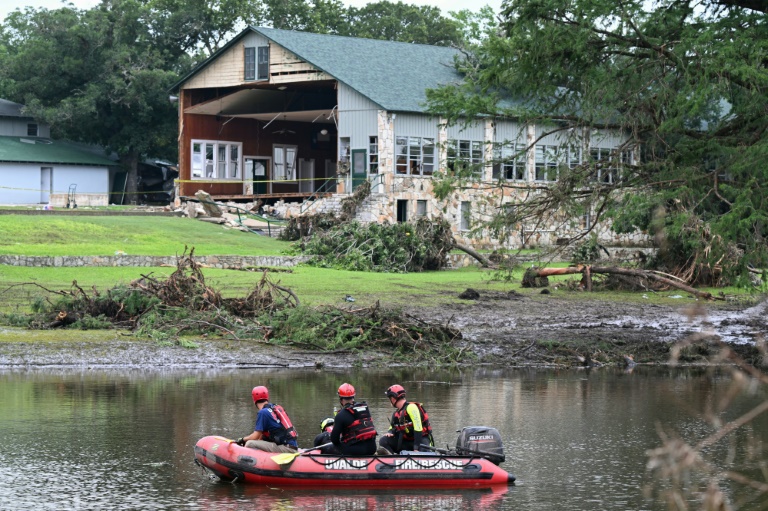Texas Floods: A Deluge of Misinformation Amidst Tragedy
The catastrophic floods that ravaged Texas, claiming over a hundred lives and leaving a trail of devastation, have become a breeding ground for misinformation and conspiracy theories across the social media landscape. While rescuers tirelessly searched for survivors amidst the wreckage, a torrent of false narratives, originating from both ends of the political spectrum, added another layer of complexity to the unfolding tragedy. The deluge of misinformation not only hampered rescue efforts but also sowed confusion and distrust amongst a community grappling with immense loss.
On one side of the political divide, left-leaning accounts on platforms like X, formerly known as Twitter, propagated the unfounded claim that staffing cuts at the National Weather Service (NWS) under the Trump administration were responsible for the perceived inadequacy of the warning systems. While the NWS, like many other government agencies, faced budget constraints during that period, experts vehemently refuted the notion that these cuts had compromised the agency’s forecasting capabilities. Meteorologists and climate scientists emphasized that the NWS had issued timely and accurate warnings, highlighting the extreme and sudden nature of the flooding event as the primary challenge.
Concurrently, a different strain of misinformation emerged from the opposite end of the political spectrum. Right-wing conspiracy theorists falsely asserted that the government had deliberately caused the flooding through cloud seeding, a weather modification technique used to stimulate rainfall. This narrative, echoing similar past conspiracy theories surrounding natural disasters, was swiftly debunked by experts who confirmed that such technology played no role in the Texas floods. The rapid spread of these baseless claims underscores the susceptibility of social media users to misinformation, particularly during times of crisis.
The proliferation of misinformation during the Texas floods reflects a larger trend observed in the aftermath of natural disasters. As communities struggle to cope with the immediate impacts of such events, social media platforms often become fertile ground for the dissemination of false narratives. Reduced content moderation and diminished reliance on human fact-checkers exacerbate the problem, allowing misinformation to spread unchecked and reach a wider audience. The emotional vulnerability of individuals during such times further contributes to their susceptibility to unsubstantiated claims.
The impact of misinformation extended beyond social media, infiltrating even traditional media outlets. Kerr County Lead, a local news publication, fell victim to a viral social media post recounting the miraculous rescue of two girls clinging to a tree amidst the floodwaters. The story, later revealed to be entirely fabricated, was retracted by the publication, highlighting the challenges faced by journalists in verifying information during rapidly evolving and emotionally charged situations. The incident serves as a stark reminder of the crucial need for journalistic vigilance and rigorous fact-checking, especially in the context of disaster reporting.
The Texas floods underscore a critical challenge in the digital age: the battle against misinformation. The convergence of extreme weather events, political polarization, and the rapid spread of information online creates a perfect storm for the proliferation of false narratives. While the immediate focus remains on supporting the affected communities and rebuilding what was lost, addressing the long-term issue of misinformation requires a multi-pronged approach. This includes strengthening fact-checking mechanisms on social media platforms, promoting media literacy among users, and fostering greater collaboration between media organizations, fact-checkers, and technology companies. Ultimately, building a more resilient and informed society requires a collective effort to combat the spread of misinformation and ensure that accurate and reliable information prevails, especially during times of crisis.


